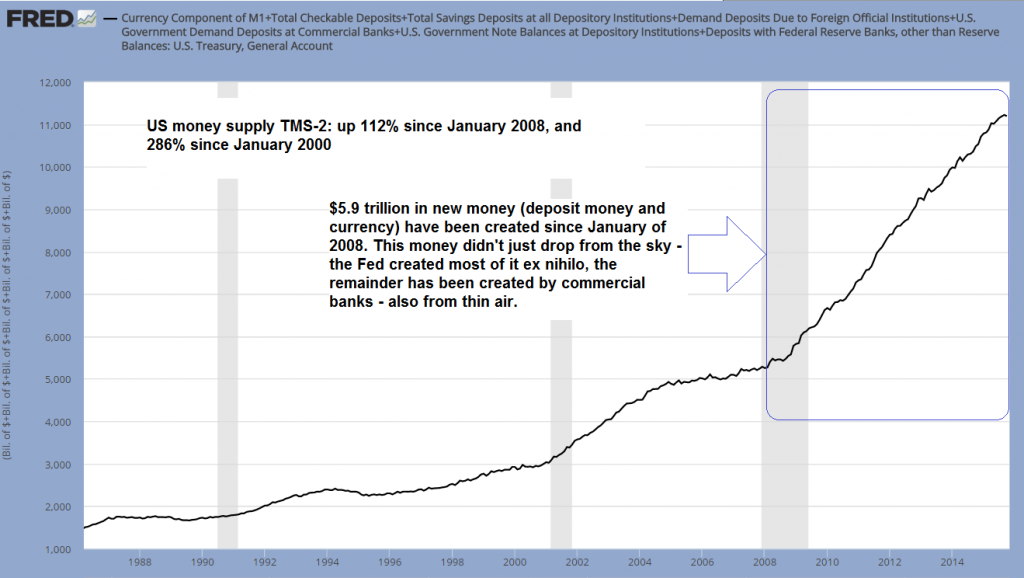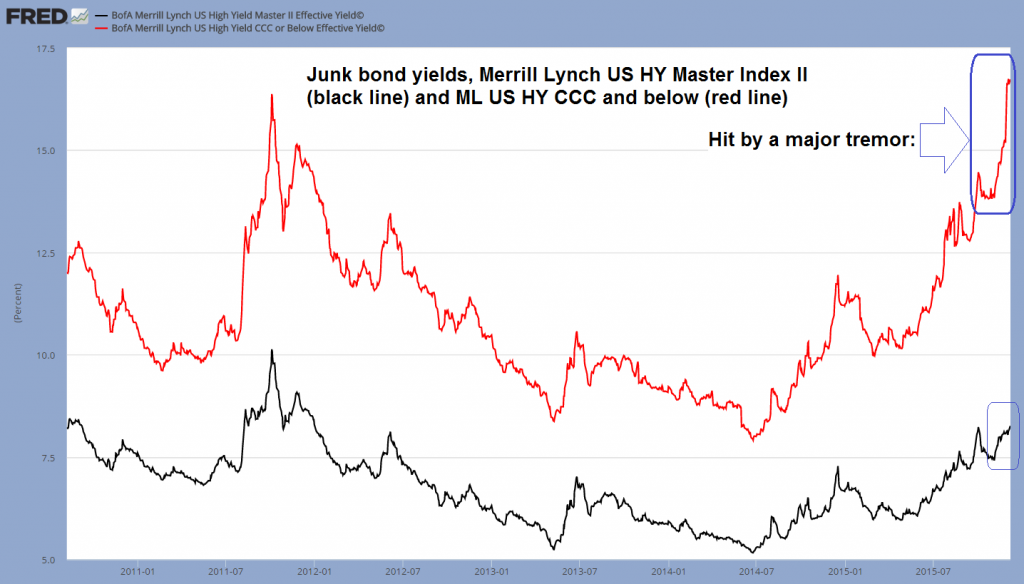The Poison of Central Planning
As is well known, central banks around the world have deployed a range of “unconventional policies” in recent years, ranging from imposing zero to negative interest rates, to outright money printing (QE).

Photo via americanpatriotdaily.com
We have seen a number of people argue that “QE” does not really involve “money printing”, but as we have explained at length, these arguments are misguided (see e.g. our in-depth discussion of the modus operandi of the Fed here: “Can the Fed Print Money?”).

Additional money created in the US economy since January of 2008 (inside the blue rectangle). The Fed created most of it.
As far as we understand it, the first error is the belief that only bank reserves are created, when in reality, both bank reserves and deposit money are created in QE operations (the latter is clearly “money”, as it can be used for the final payment of goods and services in the economy). The second error is to argue that because new money isn’t just dropped from helicopters (not yet, anyway), but involves asset purchases, it somehow doesn’t qualify as “printing”. However, it is important to keep in mind that the money used for these purchases is still created ex nihilo, at the push of a button.
As an aside, it has by now become clear that the ECB also creates both reserves and deposit money to the extent of its securities purchases, whereas Japan’s case still requires some digging on our part which we haven’t gotten around to yet (Japan e.g. excludes deposits held by securities companies from its money supply data; in some ways this is sensible, as it allows for a more fine-grained analysis of money and its potential uses, but it may also disguise how much money the BoJ is really creating).
The distortion of relative prices in the economy has become visible in a number of ways: obviously, there has been a bubble in titles to capital, a.k.a. “risk assets”, and previously there was also quite a bit of upward distortion in the prices of commodities (which was egged on additionally by credit expansion in China). One after the other of these bubbles has begun to fall apart (commodities and junk bonds being exhibits 1 and 2 so far), with only the stock market and certain government bonds left standing (especially on the short end of the curve, with many European sovereign bonds trading at negative yields to maturity, which is utterly perverse).
As far as the stock market is concerned, what is actually still “left standing” at this point is only the small handful of stocks responsible for the bulk of its gains over the past 18 months; the majority of stocks can be considered to be in downtrends already (market breadth as measured by a Goldman Sachs proprietary indicator has collapsed to a multi-year low, on a par with what has been seen near a number of major market peaks).
Recently, yet another earthquake has hit the junk bond market, especially the lower quality end of same (we have mentioned the sharp increase in trading in bonds of distressed issuers only yesterday).

Things are going haywire in the lowest rated segments of the high yield market.
In the course of researching this point, we have come across a list of other distortions in the financial markets that has been discussed in an article at Bloomberg three weeks ago. In the meantime, several of these distortions have worsened further. They are hinting at both actual as well as potential market dislocations that may soon become more obvious by hitting market segments that have hitherto escaped. In these cases it is not only extreme central bank policies, but also the plethora of new financial regulations that have created distortions.
Dislocations in Various Financial Market Segments







